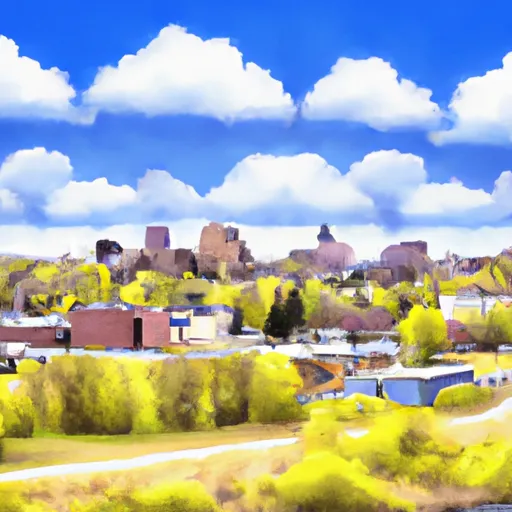-
 Snoflo Premium
Snoflo Premium
Get unlimited access to all our content
With no Ad interruptions! - Start Your Free Trial Login with existing account
Kennedy
Eden Index
Climate
4.5
•
Recreation
1.8
•
Community
•
Safeguard
2.4/10

Kennedy, Minnesota, is a small town located in Kittson County, in the northern part of the state. The town experiences a continental climate, characterized by cold winters and warm summers. Average temperatures range from around 10°F (-12°C) in winter to 80°F (27°C) in summer, with occasional extremes.
Hydrologically, Kennedy is situated in the Red River Basin, with the Roseau River running nearby. The area is known for its abundant water resources, including rivers, lakes, and wetlands. These hydrological constituents contribute to the lush natural beauty of the region.
Outdoor recreation opportunities in Kennedy are plentiful. The surrounding nature offers various activities such as fishing, boating, and swimming in the numerous lakes and rivers. Hiking and wildlife observation are popular in the nearby state parks and national wildlife refuges. During winter, residents and visitors can enjoy snowmobiling, cross-country skiing, and ice fishing.
Overall, Kennedy, Minnesota, offers a picturesque setting with a diverse climate and abundant water resources, making it an ideal destination for outdoor enthusiasts seeking both summer and winter recreational activities.
What is the Eden Index?
The Snoflo Eden Index serves as a comprehensive rating system for regions, evaluating their desirability through a holistic assessment of climate health, outdoor recreation opportunities, and natural disaster risk, acknowledging the profound impact of these factors on livability and well-being.
Climate Health Indicator (CHI): 4.5
Kennedy receives approximately
519mm of rain per year,
with humidity levels near 83%
and air temperatures averaging around
4°C.
Kennedy has a plant hardyness factor of
3, meaning
plants and agriculture in this region thrive during a short period during spring and early summer. Most
plants will die off during the colder winter months.
By considering the ideal temperature range, reliable water supplies, clean air, and stable seasonal rain or snowpacks, the Climate Health Indicator (CHI) underscores the significance of a healthy climate as the foundation for quality living.
A healthy climate is paramount for ensuring a high quality of life and livability in a region, fostering both physical well-being and environmental harmony. This can be characterized by ideal temperatures, reliable access to water supplies, clean air, and consistent seasonal rain or snowpacks.
Weather Forecast
Streamflow Conditions
Lower Red
Area Rivers
Lower Red
Snowpack Depths
Lower Red
Reservoir Storage Capacity
Lower Red
Groundwater Levels
Recreational Opportunity Index (ROI): 1.8
The Recreational Opportunity Index (ROI) recognizes the value of outdoor recreational options, such as parks, hiking trails, camping sites, and fishing spots, while acknowledging that climate plays a pivotal role in ensuring the comfort and consistency of these experiences.
Access to outdoor recreational opportunities, encompassing activities such as parks, hiking, camping, and fishing, is crucial for overall well-being, and the climate plays a pivotal role in enabling and enhancing these experiences, ensuring that individuals can engage in nature-based activities comfortably and consistently.
Camping Areas
| Campground | Campsites | Reservations | Toilets | Showers | Elevation |
|---|---|---|---|---|---|
| Horseshoe Park | None | 811 ft | |||
| Alvarado City Park | None | 810 ft | |||
| Lions Club Park - Stephen | None | 831 ft | |||
| Island Park - Argyle | 22 | 844 ft | |||
| Lancaster Park | 28 | 914 ft | |||
| Gilbert Olson Park | 36 | 810 ft | |||
| Northwest Acres | 22 | 827 ft | |||
| Birds Hill Provincial Park | 476 | 871 ft | |||
| Selkirk Park | 132 | 723 ft | |||
| Oslo City Park | None | 808 ft |
Catastrophe Safeguard Index (CSI):
The Catastrophe Safeguard Index (CSI) recognizes that natural disaster risk, encompassing floods, fires, hurricanes, and tornadoes, can drastically affect safety and the overall appeal of an area.
The level of natural disaster risk in a region significantly affects safety and the overall livability, with climate change amplifying these risks by potentially increasing the frequency and intensity of events like floods, fires, hurricanes, and tornadoes, thereby posing substantial challenges to community resilience and well-being.
Community Resilience Indicator (CRI):
The Community Resilience Indicator (CRI) recognizes that education, healthcare, and socioeconomics are crucial to the well-being of a region. The CRI acknowledges the profound impact of these elements on residents' overall quality of life. By evaluating educational resources, healthcare accessibility, and economic inclusivity, the index captures the essential aspects that contribute to a thriving community, fostering resident satisfaction, equity, and social cohesion.

